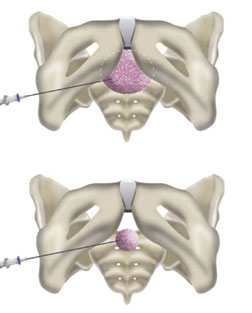
4D Brachytherapy for improved clinical outcomes

Important facts
The first stage for all patients referred to The Prostate Brachytherapy Centre is an assessment visit to make sure that we have all the important facts about you that we need to know. To help decide whether prostate brachytherapy may be right for you we need to be sure that:
- You are in reasonably good health.
- Your prostate specific antigen (PSA) is usually below 25 ng/mL.
- Your Gleason score, which measures how aggressive or quickly your cancer is growing, is below 9.
- Your cancer is localised to the prostate gland and has not spread to areas outside it.
- Occasionally, if our assessment suggests that there is a high chance your prostate cancer has spread to cells outside your prostate gland you may be offered a short 5-week course of external beam radiotherapy (EBRT) before you have brachytherapy treatment.
Click here to find out about EBRT
Prostate Specific Antigen (PSA)
Prostate specific antigen (PSA) is a protein produced by both normal and cancer cells in the prostate gland. If the prostate gland gets larger there is an increase in the levels of PSA in the blood. A rise in PSA levels can indicate that there may be cancer cells growing in the prostate gland. However the prostate gland can get larger with age or due to the presence of an infection. So an abnormal level of PSA is only a warning sign for prostate cancer and further investigations are needed to be sure that cancer is present or to rule it out.
PSA in blood is measured as the weight of PSA protein in a millilitre (mL) of blood. The weight of PSA protein in measured in nanograms (ng).
A PSA level greater than 20ng/mL may suggest that your prostate gland is larger than the best size for successful prostate brachytherapy treatment. A PSA level of greater than 10ng/mL may suggest that your cancer has spread outside the prostate.
Gleason Score
The Gleason score is used to assess the pathological grade of prostate cancer. The grade of a cancer is the term used to describe how aggressive the disease is and whether it will progress quickly (months) or slowly (years). The grading assessment is made by a pathologist in the laboratory, looking at the prostatic cells under the microscope. The grading system used for prostate cancer is known as the Gleason Scoring system, named after the pathologist Donald Gleason, and ranges from 2–10.
The pathologist will identify several of the prostate cancer cells in the biopsy. Having identified the largest and second largest areas of cancerous cells, they will assign each area a number known as the Gleason grades. These grades range from 1–5, with grades 1–3 tumours least likely to spread and grades 4 and 5 most likely. A Gleason score greater than 6 indicates a high risk of spread.
The Gleason Score is calculated by adding the two Gleason grade numbers together thus, the score ranges from 1+1=2 to 5+5=10. Therefore, a Gleason Score of 3+2=5 suggests that most of the cancer is Gleason grade 3, with a smaller amount of Gleason grade 2. Prostate cancers with a Gleason Score of 7 or greater will always contain at least some Grade 4 tumour and hence have a worse prognosis. Understanding of the pathological grading is of great importance for both the clinician and the patient, as it will determine which treatment options are available, as well as their likely success. Many regional cancer centres will arrange for a specialist pathologist to review the microscopic slides of a patient’s prostate cancer cells to confirm the diagnosis before treatment begins.


